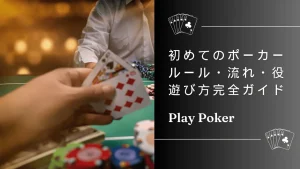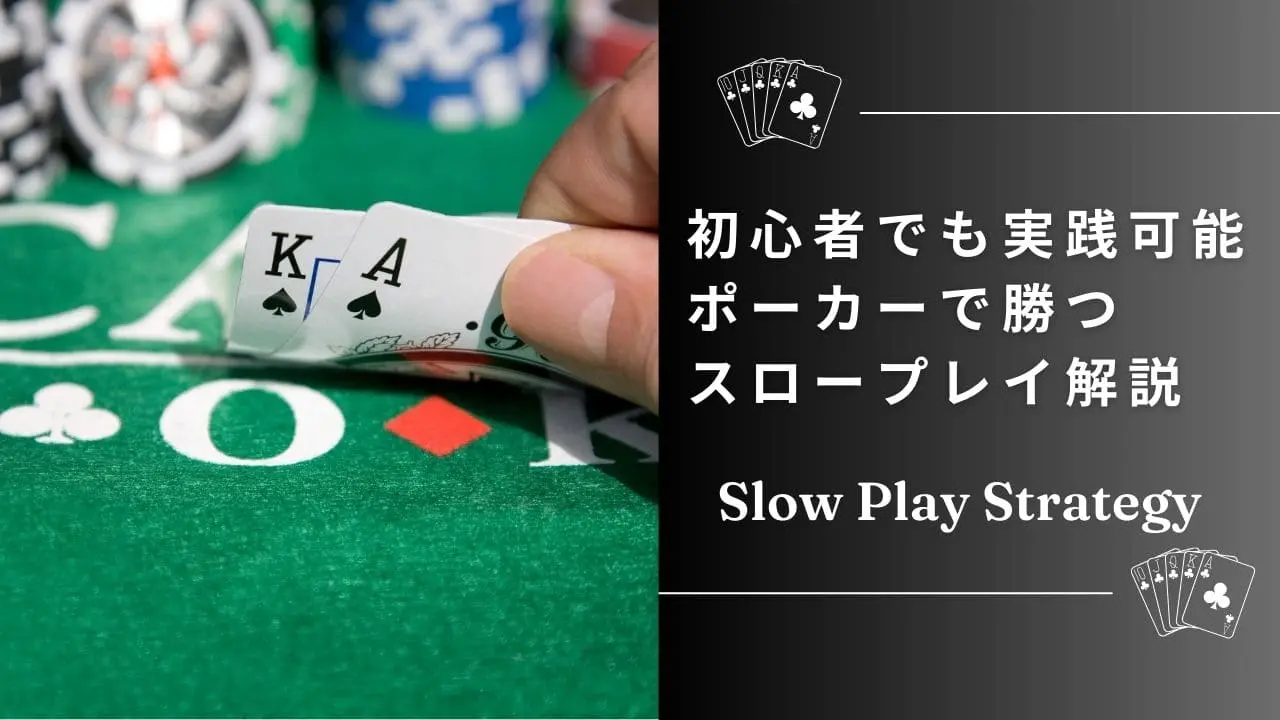Poker is more than just a card game—it’s a battle of wits, psychology, and strategy. Among the various tactics players use, slow play stands out as a powerful strategy that can manipulate opponents into making costly mistakes. However, mastering slow play requires a deep understanding of poker fundamentals, opponent tendencies, and optimal timing.
In this guide, we’ll cover everything you need to know about slow play—from basic principles to real-world examples, risk management, and advanced applications.
What Is Slow Play in Poker?
Slow play is a strategy where a player with a strong hand plays passively to mislead opponents into thinking their hand is weak. By checking or making small bets, you encourage your opponents to bet aggressively, ultimately leading to a larger pot.
For beginners, slow play can be a valuable tool to enhance the psychological aspect of the game and increase profitability. However, using it carelessly can be risky, so understanding when and how to deploy this strategy is crucial.
Examples of Slow Play in Action
Successful Slow Play Example:
Imagine you are holding K♠ K♥ and the flop comes K♦ 7♣ 8♥, giving you a strong set. Instead of betting aggressively, you check to disguise your strength. If your opponent sees this as a sign of weakness and makes a strong bet, you can call and let them build the pot further before making your move later in the hand.
Failed Slow Play Example:
Using the same scenario, if your opponent is a cautious player, they might check as well, preventing the pot from growing. Additionally, if the turn or river brings a dangerous card (e.g., completing a straight or flush for your opponent), your passive play may backfire, costing you the pot.

When to Use Slow Play Effectively
Slow play is not always the best option. The following situations are where it works best:
Against Aggressive Opponents
If your opponent frequently bets and raises, slow playing can be highly effective. They may interpret your passive play as weakness and increase their bets, allowing you to trap them into committing more chips to the pot.
When You Have an Overwhelmingly Strong Hand
If you hit a full house or straight early in the hand, your chances of losing are minimal. In such cases, slow play can be used to extract more value from opponents who believe they are ahead.
When You Have Positional Advantage
Being in a late position allows you to observe your opponents’ actions before making your move. This gives you more control over the pot size and the ability to adjust your strategy accordingly.
The Risks of Slow Play and How to Avoid Them
While slow play can be highly rewarding, it comes with inherent risks. Here’s how to minimize them:
1. Giving Free Cards to Opponents
By checking or making small bets, you allow your opponents to improve their hands at no cost.
Solution:
- Avoid slow playing on draw-heavy boards (e.g., when straight or flush draws are possible).
- Make small but meaningful bets to ensure opponents pay a price for chasing their draws.
2. Predictability and Exploitation
If you always slow play strong hands, experienced players will catch on and refuse to fall into your trap.
Solution:
- Mix in bluffs and semi-bluffs to keep your play unpredictable.
- Use slow play sparingly against the same opponents.
3. Ineffective Against Tight or Passive Players
Cautious players may not fall for slow play traps, resulting in a smaller pot than if you had bet aggressively.
Solution:
- Adjust your strategy based on your opponent’s playing style.
- Use value betting instead of slow play against conservative players.
How to Master Slow Play with Psychological Tactics
Understanding the psychological aspect of slow play can significantly boost its effectiveness. Here’s how:
Manipulating Opponent Behavior
- Against aggressive players, use slow play to let them think they are in control before trapping them with a big raise.
- Against cautious players, avoid slow play and instead bet small to lure them into the hand.
Reversing Expectations
Make your opponents believe they have an edge when they don’t. By checking or making a small bet with a monster hand, you encourage them to overcommit.
Slow Play in Online Poker vs. Live Poker
Online poker introduces unique challenges for slow play:
- Limited Physical Tells: Without live tells, rely on bet sizing and timing tells to assess your opponent’s strength.
- Faster Gameplay: Online players tend to play more hands, so slow play may be less effective against observant opponents.
- Balancing With Bluffing: Since slow play alone may be less effective, mix in bluffs and semi-bluffs to keep opponents guessing.
Combining Slow Play with Other Strategies for Maximum Success
Slow play is most effective when used in conjunction with other strategies:
1. Slow Play + Bluffing
- Use slow play when you have a monster hand.
- Use bluffs when you don’t, keeping opponents uncertain about your true strength.
2. Slow Play + Semi-Bluffing
- A semi-bluff is when you bet with a drawing hand that has the potential to improve.
- Mixing semi-bluffs with slow play prevents opponents from easily identifying your patterns.
3. Slow Play + Aggression
- Against unpredictable players, shift between passive and aggressive play to disrupt their expectations.
- Occasionally mix in large bets after slow playing to capitalize on opponents who fall into your trap.
Conclusion: When and How to Use Slow Play Wisely
Slow play is an advanced poker strategy that, when used correctly, can maximize your profits and outmaneuver your opponents. However, it is not a one-size-fits-all approach. Carefully evaluate your opponents, the board, and your hand strength before deciding to slow play.


